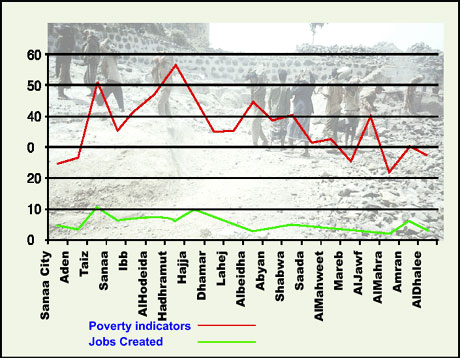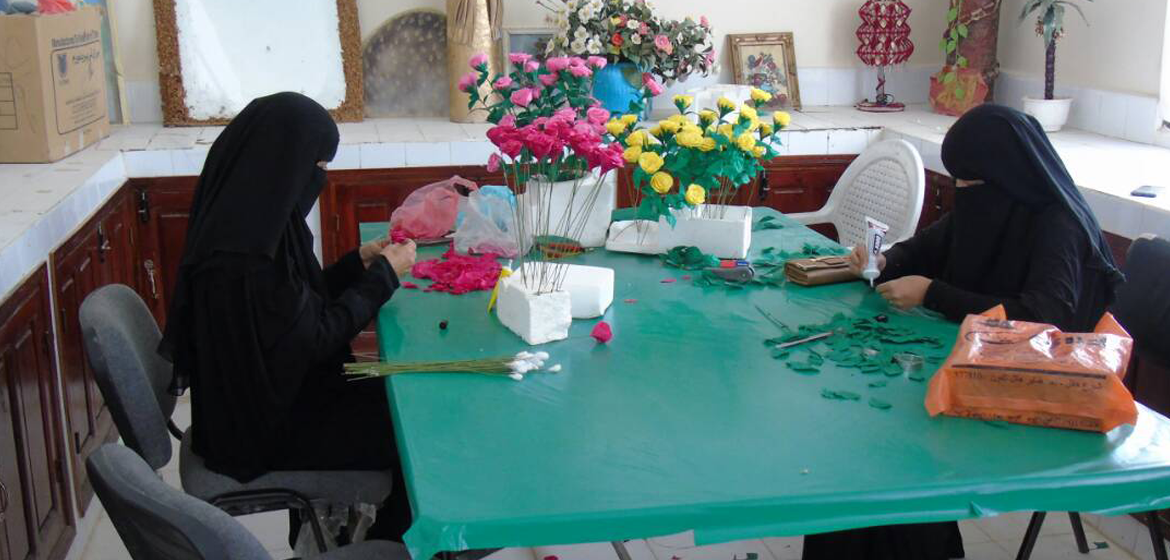PWP role in Poverty Reduction is manifested in the following: The extent to which areas with high poverty concentration were targeted:
Statistic on Poverty (1998) show that poverty is concentrated in the rural areas, where about (83%) of the poor people are concentrated, while the percentage of poor families in the urban areas forms about (17%).
This situation is not surprising as rural population represent (77%) of the total population.
PWP’s interventions in the rural areas reached 80% while in urban areas 19.5% (Social Impact Assessment SIA study sample)
Distribution of Sub-projects According to the Development Status
No. |
% | |
| Urban Areas | 236 | 20% |
| Rural Areas | 1232 | 80% |
| Total | 1468 | 100% |
This indicates that PWP-2 targeted these areas with high rates of poverty.
Thus there is a direct co-relation between distribution of sub-projects and the geographical distribution of poverty.
Just as poverty varies between the rural and urban so is its distribution between governorates, whereby total number of poor families is higher in Taiz (56%), Al-Beidha (55%), Abyan (53%, Lahj (52%) …etc.
The diagram below elucidates the co-relation between poverty levels in the govenorates and PWP’s interventions.

Enhancing Community Participation in the Development Process
To achieve this objective, it is pre-requisite for communities to be involved before commencing the project cycle. Involvement of communities both male and female starts right from the beginning during project identification, to preparation, implementation, during supervision and most important during handing over and O & M. In addition, financial contribution (cash or in-kind) is a pre-requisite to project implementation.
Level of Community Participation can be summarized as follows:
- Identification, prioritizing and selecting projects.
- Forming committees and user associations
- Enhancing institutional awareness
- Linking communities to governmental and non-governmental Institutions.
- Enhancing social coherence amongst communities.
- Involvement in project implementation.
- Involvement in Operation and Maintenance.
The positive outcomes of this aspect cannot be over emphasized. PWP’s experience in dealing with communities over the last decade it has noted significant improvements at all levels, from negative responses to positive, to full trust, increased awareness on development aspects, social cohesion and abilities to assume responsibilities of completed projects.
The rapport built between PWP and communities in numerous instances has led to over willingness to financial contributions. In fact during the second phase it reached 11%.
Improving Local Contractors & Engineering Consultancy Services.
From the beginning of its establishment, the PWP focused on improving the performance level of PWP staff, consultant engineers, contractors and NGO’s .
The PWP organized a number of training workshops in many different governorates.
The training workshops dealt with important issues such as good practice for construction, supervision on site and reporting, quality assurance, environmental assessment, working with communities and enhancing community awareness, operation and maintenance of water and water harvesting projects.
In addition, the PWP conducts extra training workshops during opening of tenders for local contractors on bid preparation and submission of bid documents.
The PWP also contributed in creating job opportunities for unemployed engineers, hence increasing their incomes and improving living conditions.




